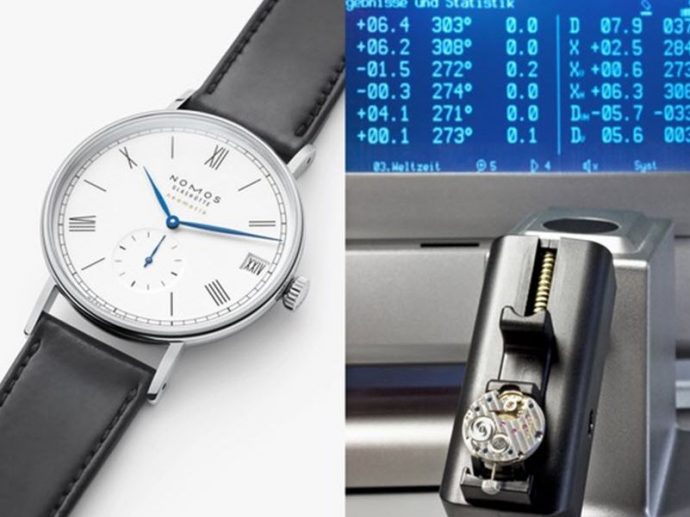Categories more
- Adventures (17)
- Arts / Collectables (15)
- Automotive (37)
- Aviation (11)
- Bath, Body, & Health (77)
- Children (6)
- Cigars / Spirits (32)
- Cuisine (16)
- Design/Architecture (22)
- Electronics (13)
- Entertainment (4)
- Event Planning (5)
- Fashion (46)
- Finance (9)
- Gifts / Misc (6)
- Home Decor (45)
- Jewelry (41)
- Pets (3)
- Philanthropy (1)
- Real Estate (16)
- Services (23)
- Sports / Golf (14)
- Vacation / Travel (60)
- Watches / Pens (15)
- Wines / Vines (24)
- Yachting / Boating (17)
Published
08/29/2020 by NOMOS GlashütteThere are many qualities that make a good timepiece—the materials used, the design details, the way it wears on the wrist. But the most important part cannot be seen or felt, only measured: Its accuracy.
It goes without saying that the technical and aesthetic aspects are important to consider, as is the craftsmanship that goes into a timepiece. But the two aspects that are most essential to the wearer are how their watch feels on the wrist—and how well it works. If it is too heavy, it can feel unbalanced. If it is too light, however, the wearer will be equally unsatisfied. After all, we tend to associate weight with quality. We know this from other areas of life: Big, fluffy towels from five-star hotels are particularly pleasant. An organic, free-range chicken should have a healthy amount of meat on its bones. On the other hand, running shoes, suitcases, and bicycles are more expensive the lighter they are. And how about mechanical watches?
At NOMOS Glashütte, the rule is quite simple—the weight and size of a watch should correspond to the size of the mechanical caliber within. Since these should be as slender and elegant as possible, the cases are just as thick as they need to be.
The Sport models are, naturally, more robust and heavier than other NOMOS watches. The wearer should be able to feel the watch on their wrist, but it shouldn’t be a burden. “A NOMOS watch isn’t a weight. It’s a subtle reminder of the time, available whenever you need it,” says Lennart Kluge, 34, Head of Watch Assembly at NOMOS Glashütte. The timegrapher, shown above, ensures that NOMOS timepieces do their work with the utmost precision: A powerful microphone records the light ticking in six positions and compares it with an ideal frequency. In this way, NOMOS watchmakers can analyze the accuracy of a watch and adjust it as required. The sounds amplified by the timegrapher can also reveal other tiny flaws, such as specks of dust in the movement or irregularities in the of the escapement. These can then be fixed by the watchmaker—for example by adjusting the pallet stones ever so slightly, using a tiny piece of shellac to move it into a better position, a micrometer to the left or right.
The limited-edition Ludwig – 175 Years Glashütte Watchmaking is so exact that its accuracy corresponds to chronometer standards. That’s how experts say ‘highly precise.’ Vintage timegraphers made this clear in black and white, by tracing every tick with a line on a paper roll. Now precision is measured digitally. And used every day, in everyday life—by everyone who wears a NOMOS watch on their wrist.















